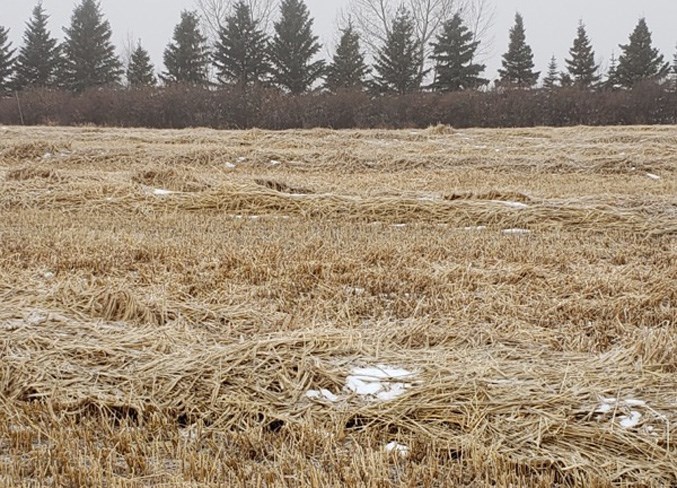Being described as the "harvest from hell" in some circles, Alberta farmers have had to grapple with challenging weather conditions throughout the growing season seemingly unable to catch a break from Mother Nature as they headed into the fall. Locally, estimates are that upwards of 40 per cent of this year's crop is still out in the field. The situation is so dire that the County of St. Paul is just steps away from declaring an agriculture disaster in the area, joining with five other rural municipalities in Alberta who have already done so.
County council members discussed the possibility of moving forward with such a declaration at last Tuesday's council meeting but stopped short of making the move until they have some firm numbers to work with.
County Ag. Fieldman Keith Kornelsen told council unharvested acreage estimates in the county are at about 40 per cent.
Coun. Darrell Younghans said the amount still in the fields varies within the county, with him estimating it's closer to 50 per cent in his division.
"It's going to be in that 40 to 50 per cent range," he said. "It's the higher value crops are out there. There's a lot of canola out there . . . We need snow to come off those canola swaths," Younghans said, adding some warm weather to melt the snow followed by a deep freeze to make the canola brittle is what was needed last week. And while warm temperatures did materialize, they also brought rain off and on through the week.
"Unfortunately, declaring a disaster does not shake a lot of gold out of the trees," Reeve Steve Upham said adding that what will get people's attention is when the banks start telling the story. "This spring they will start talking. There's a wreck out there . . . I've heard everything from complete to 10 to 15 per cent complete. There's a vast range depending on the farmer's ability to dry and aerate."
"It would be nice to know how much crop is insured in the county," Younghans added.
“We’ve seen bad harvests in three out of the last four growing seasons. We can’t control the weather but it’s time for our governments to resolve the political issues that we can control. Not only are we facing trade barriers, but our competitors in the U.S. are receiving their third round of government payouts,”
Don Shepert, Alberta Pulse Growers chair, and a farmer in the St. Brides area, said in a statement from Team Alberta, a provincial agriculture lobby group.
The group is calling for aggressive action from both the provincial and federal governments to address the serious economic hardships faced by farmers as a result of trade wars and export barriers, government business risk programs it claims are not adequately meeting the needs of farmers, and a looming federal carbon tax on Jan. 1 that will only serve to compound the fallout from a poor harvest in the province.
"Unharvested acres represent a total value of more than $778 million across the province. Conditions are most critical in the Peace Region where 40 per cent of the crop is unharvested with other pockets in the Peace and several areas along the Highway 2 corridor where less than half of the harvest is complete. The 2019 growing season marks the third year of drought in southern Alberta and excessive moisture in northern Alberta," according to a Team Alberta media release.
MLA Dave Hanson estimates constituency-wide an average of upwards of 20 per cent of the crops are unharvested.
"That’s kind of the profits . . . It trickles down to the auto dealerships, the ag businesses in the area; everybody gets a hit because that’s the spending money," Hanson said. "I’ve talked to people that have never had a grain dryer before and this year they’ve had to buy a dryer and they estimate it’s an extra dollar a bushel by the time they’ve run it through there. It’s a pretty dire situation and the province will definitely be stepping in to help out I’m sure."
Asked if an increasing number of acres farmed by fewer farmers adds to the issue when the weather doesn't cooperate, Hanson said, "I hesitate to say it’s the size of the farms because the equipment is there to do it now. But, if you don’t have the weather to get out in the fields it doesn’t matter if you have a hundred acres or 10,000."
Acting County CAO Tim Mahdiuk said council has to answer five questions in moving forward in declaring an agricultural disaster in the municipality. These include: Does the state of agricultural disaster cover the entire area or just a region within the municipality? Does the agriculture disaster cover all agriculture in the municipality or only certain commodity products? Has the municipality used AFSC data for the local area to assess the level of impact being experienced? Has the municipality contacted producer groups and associations to discuss impacts being experienced? Does the municipality have data to support this decision and municipal mapping?



